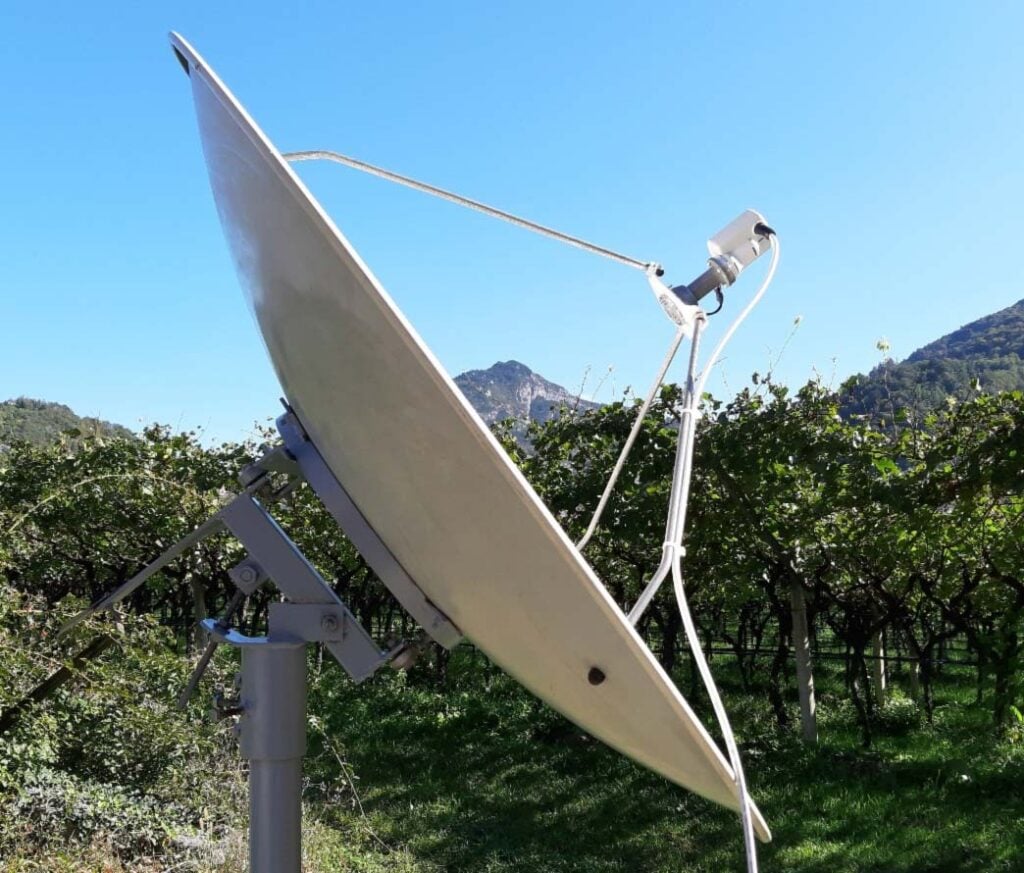In the past we've posted several times about how 1.42 GHz Hydrogen Line amateur radio telescopes used with RTL-SDRs or other SDRs for Hydrogen line observations of the galaxy. Recently Hackaday ran a post highlighting a project from "PhysicsOpenLab" describing an 11.2 GHz radio telescope that uses an Airspy SDR as the receiver.
Celestial bodies emit radio waves all across the radio spectrum and typically observations can be made anywhere between 20 MHz to 20 GHz. Choosing an optimal frequency it is a tradeoff between antenna size, directivity and avoiding man made noise. For these reasons, observations at 10-12 GHz are most suitable for amateur radio telescopes.
The posts by PhysicsOpenLab are split into two. The first post highlights the hardware used which includes a 1.2m prime focus dish, and 11.2 GHz TV LNB, a wideband amplifier, a SAW filter, a bias tee, and the Airspy SDR. The LNB converts the 11.2 GHz signal down to 1.4 GHz which can be received by the Airspy. Once at 1.4 GHz it's possible then to use existing commercial filters and amplifiers designed for Hydrogen line observations.
The second post explains the GNU Radio based software implementation and the mathematical equations required to understand the gathered data. Finally in this post they also graph some results gathered during a solar and lunar transit.
Finally they note that even a 1.2m dish is quite small for a radio telescopic, but it may be possible to detect the emissions from the Milky Way and other celestial radio sources such as nebulae like Cassiopeia A, Taurus A and Cygnus A a radio galaxy.

